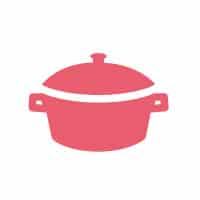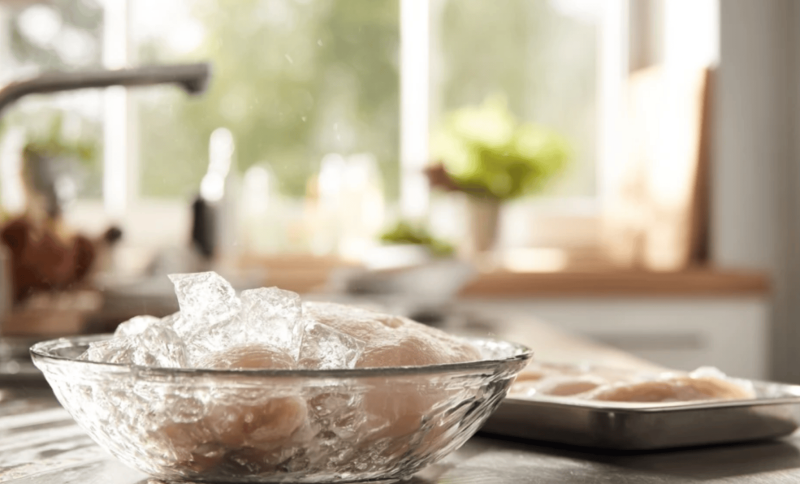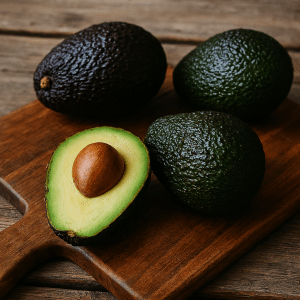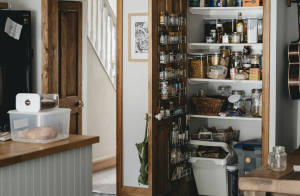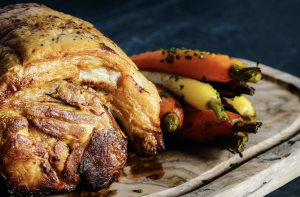Forgot to take the poultry out of the freezer? You’re definitely not alone. We’ve all been there, dinner time is approaching, and that frozen chicken is still rock solid.
The good news is, you don’t have to stress or settle for takeout. There are safe and reliable ways to thaw meat quickly without compromising food safety.
Even if you’re preparing chicken for tonight’s recipe or planning ahead for the week, knowing how to defrost it the right way makes all the difference.
Just remember, bacteria thrive between 40°F and 140°F, so keeping things safe while speeding up the process is key.
Why Safe Thawing Matters
When it comes to thawing chicken, safety should always be the top priority.
Food safety experts warn that improper thawing creates the perfect breeding ground for harmful bacteria like Salmonella, Campylobacter, and E. coli.
The USDA identifies the danger zone as temperatures between 40°F and 140°F, where bacteria can multiply in just minutes.
Leaving poultry on the counter or soaking it in hot water may seem quick, but it allows the outer layers to warm up while the inside stays frozen, a risky mix.
You may not see or smell bacteria, but they’re there. Smart thawing keeps your chicken safe and your meals stress-free.
Fast & Safe Ways to Thaw Frozen Chicken
Need to cook dinner quickly? Here’s how to thaw chicken, keeping it tender, juicy, and bacteria-free.
1. Microwave Method (Fastest Overall)
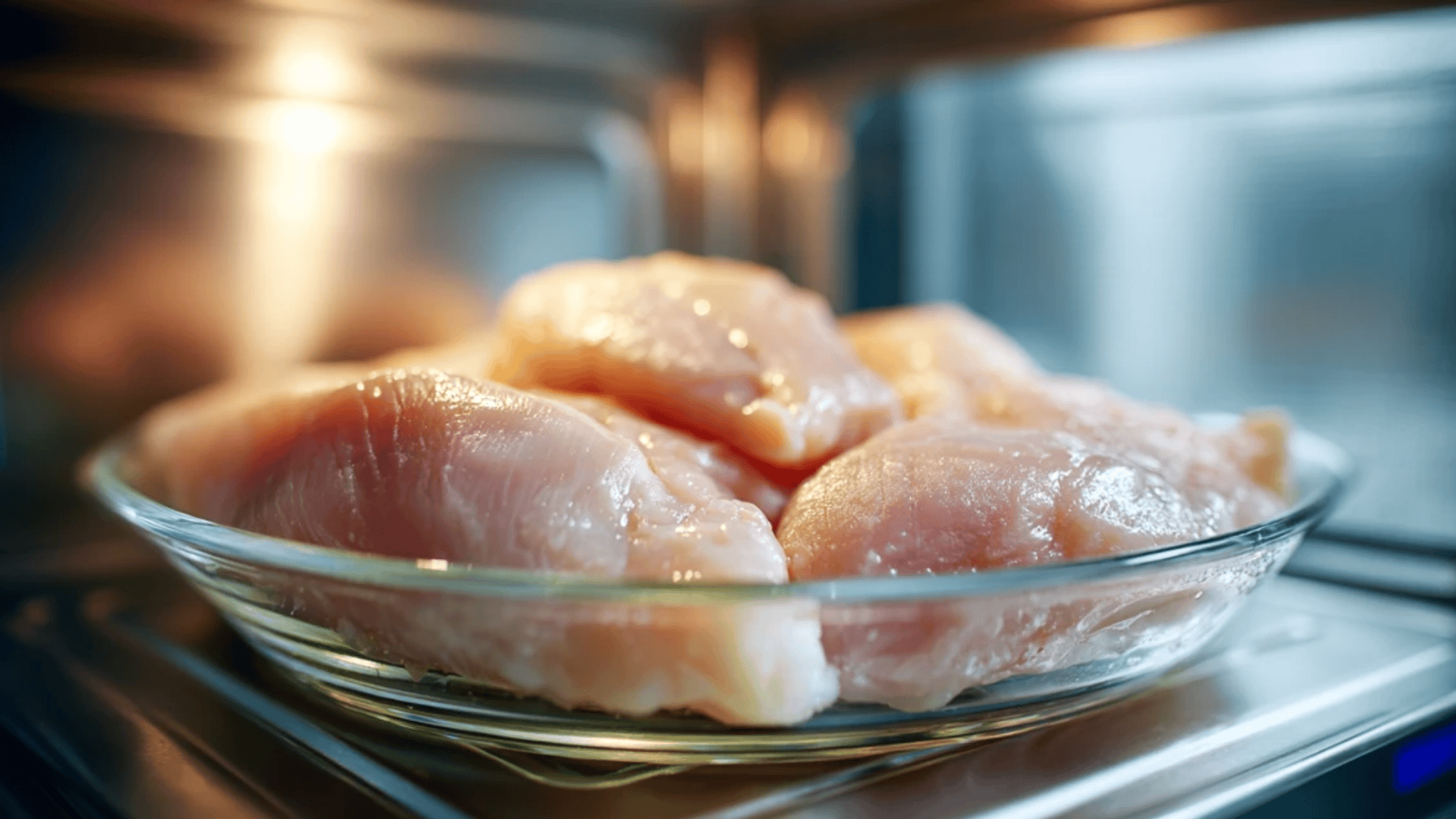
This method is perfect when you need to thaw chicken quickly using the microwave while keeping it evenly defrosted and safe.
|
Some parts may start cooking during defrosting, creating a warm surface ideal for bacterial growth. Always cook immediately afterward.
Time: 8–10 minutes per pound | Best for: Boneless breasts, tenders, and small cuts
2. Cold Water Method (Safe & Quick)
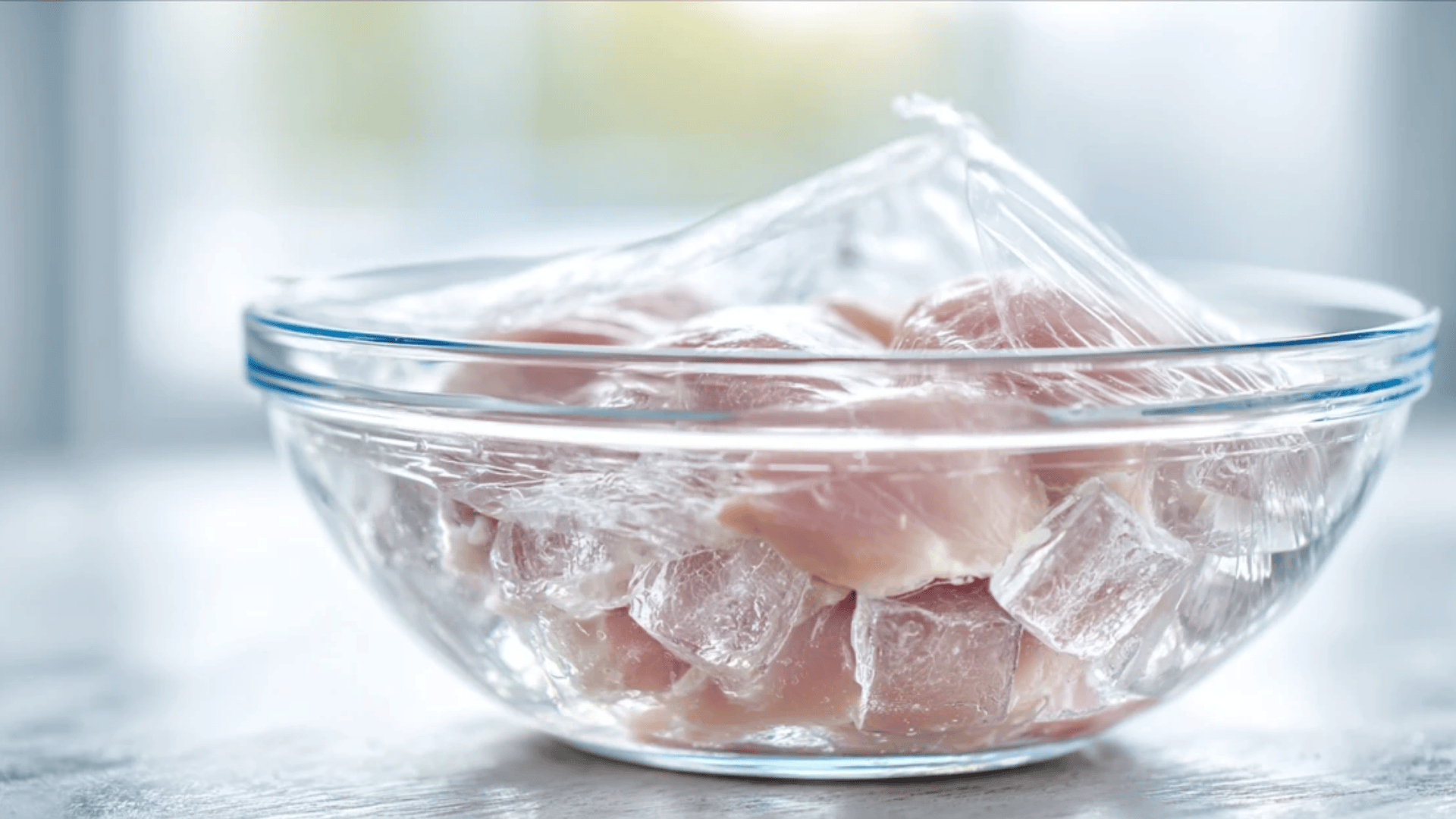
This method strikes a balance between speed and safety, making it a reliable option for quickly thawing chicken while maintaining its quality and freshness.
|
The water must remain cold, at a temperature below 70°F, to prevent bacterial growth. Add ice cubes if the tap water feels warm.
Time: 30 minutes to 2 hours | Best for: All cuts when you have 1–2 hours
3. Refrigerator Method (Safest Option)
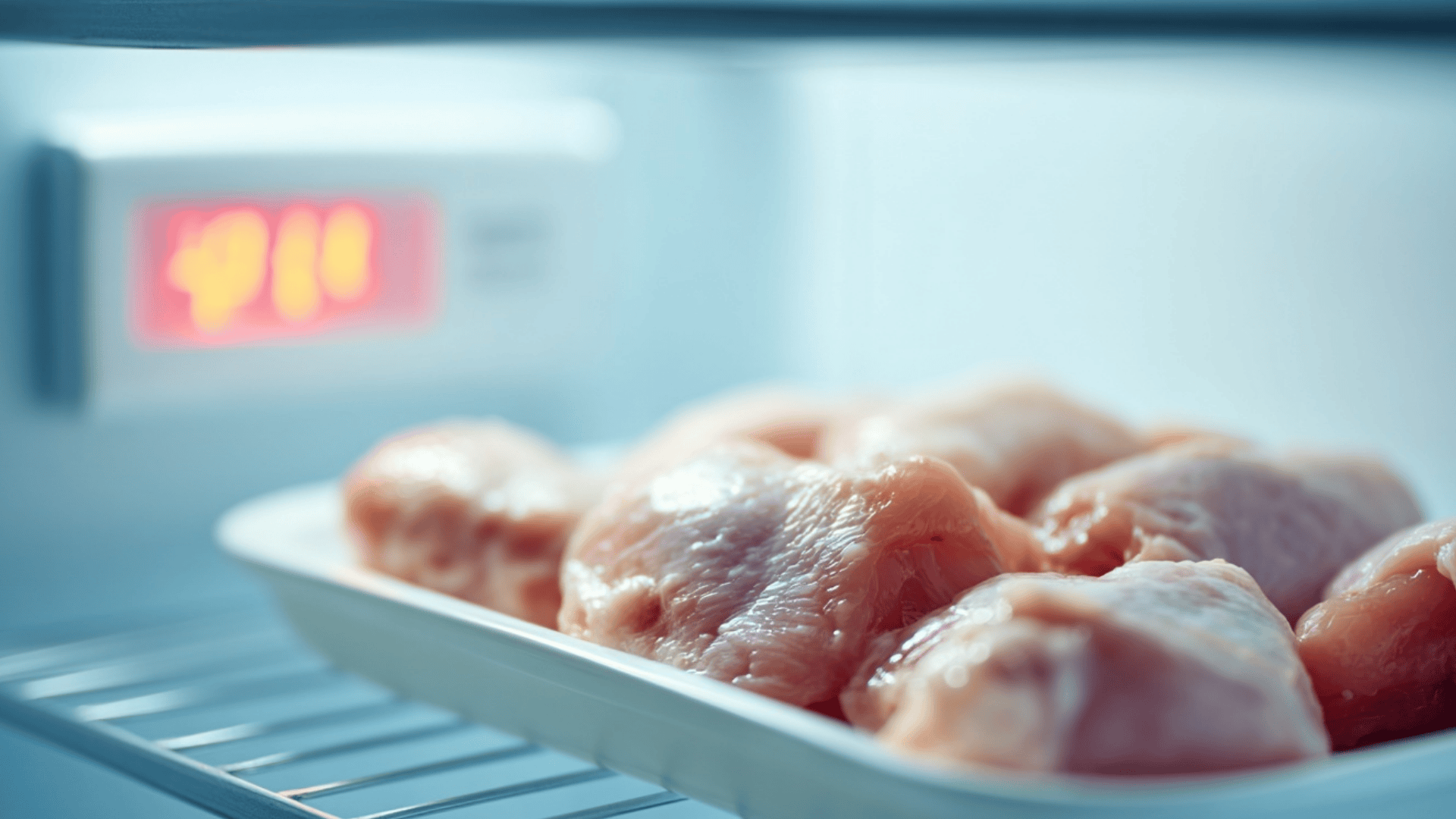
The refrigerator method is the most reliable way to thaw chicken safely, preserving texture and preventing bacterial contamination.
|
Poultry thawed in the refrigerator can be safely refrozen, although the texture may slightly change after refreezing.
Time: 8–10 hours for cuts| Best for: Meal prep and large batches
4. Air Fryer Setting
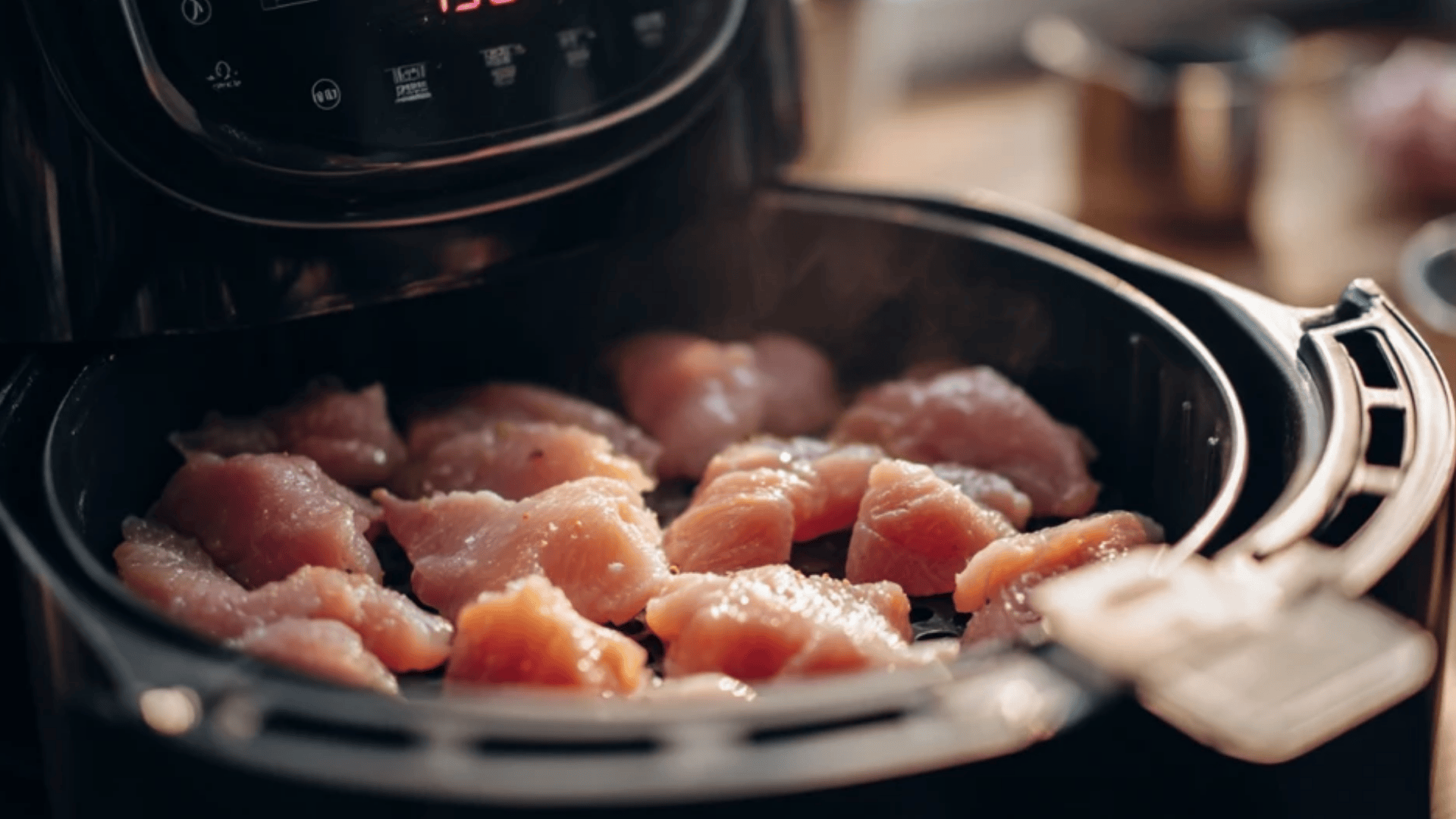
Using an air fryer is a modern and efficient way to thaw small chicken portions safely, making them ready for quick cooking.
|
Watch closely as air fryers can heat unevenly, partially cooking edges before the center is fully thawed.
Time: 15–25 minutes | Best for: Boneless pieces, wings, tenders
5. Running Cold Water Technique
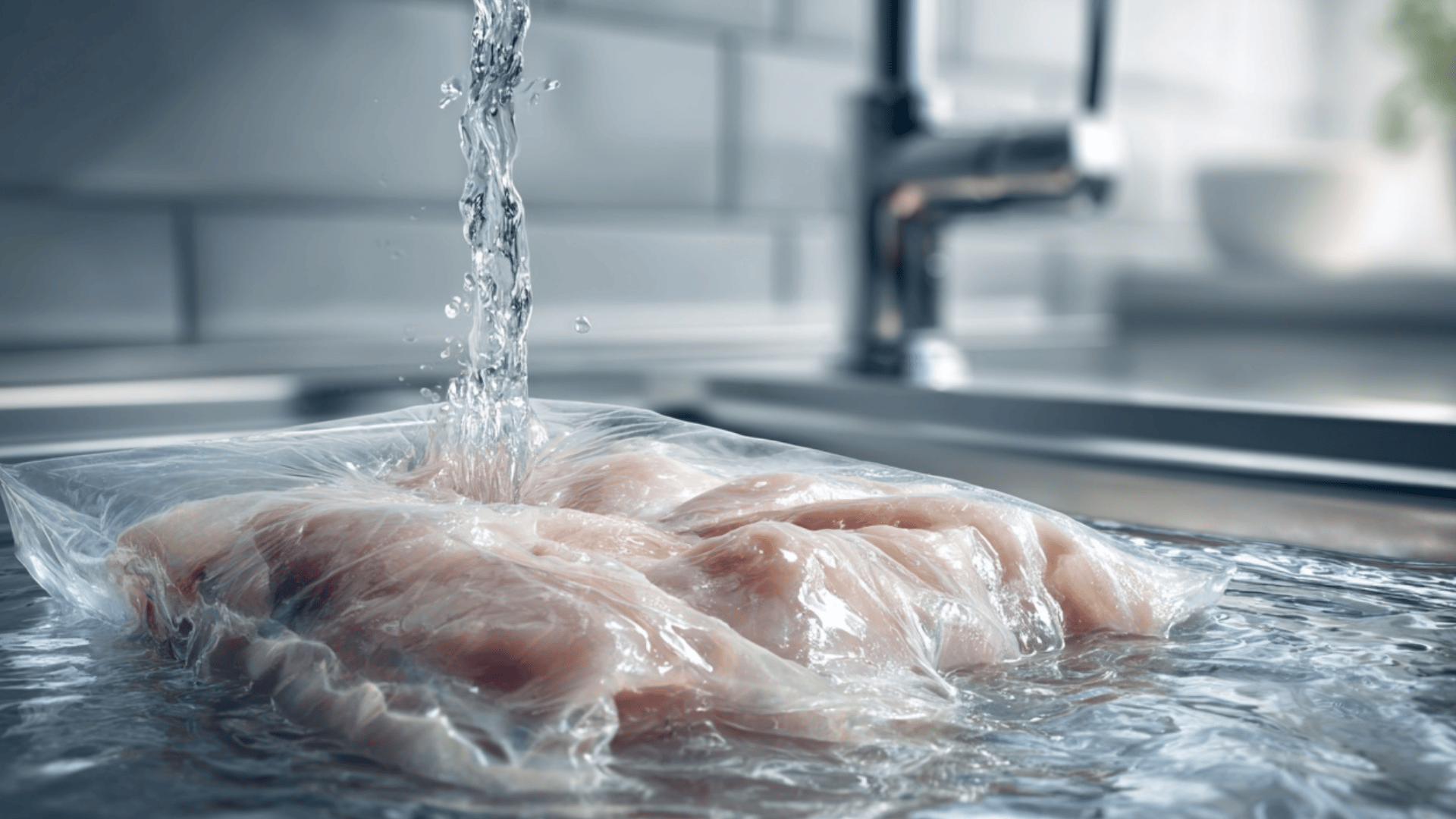
This variation of the cold-water method utilizes gentle running water to accelerate thawing and ensure even temperature distribution.
|
Though it uses more water, it can shorten thawing time by 20–30% without compromising food safety.
Time: 30–60 minutes | Best for: When you need chicken ready in under an hour
6. Cook Directly from Frozen
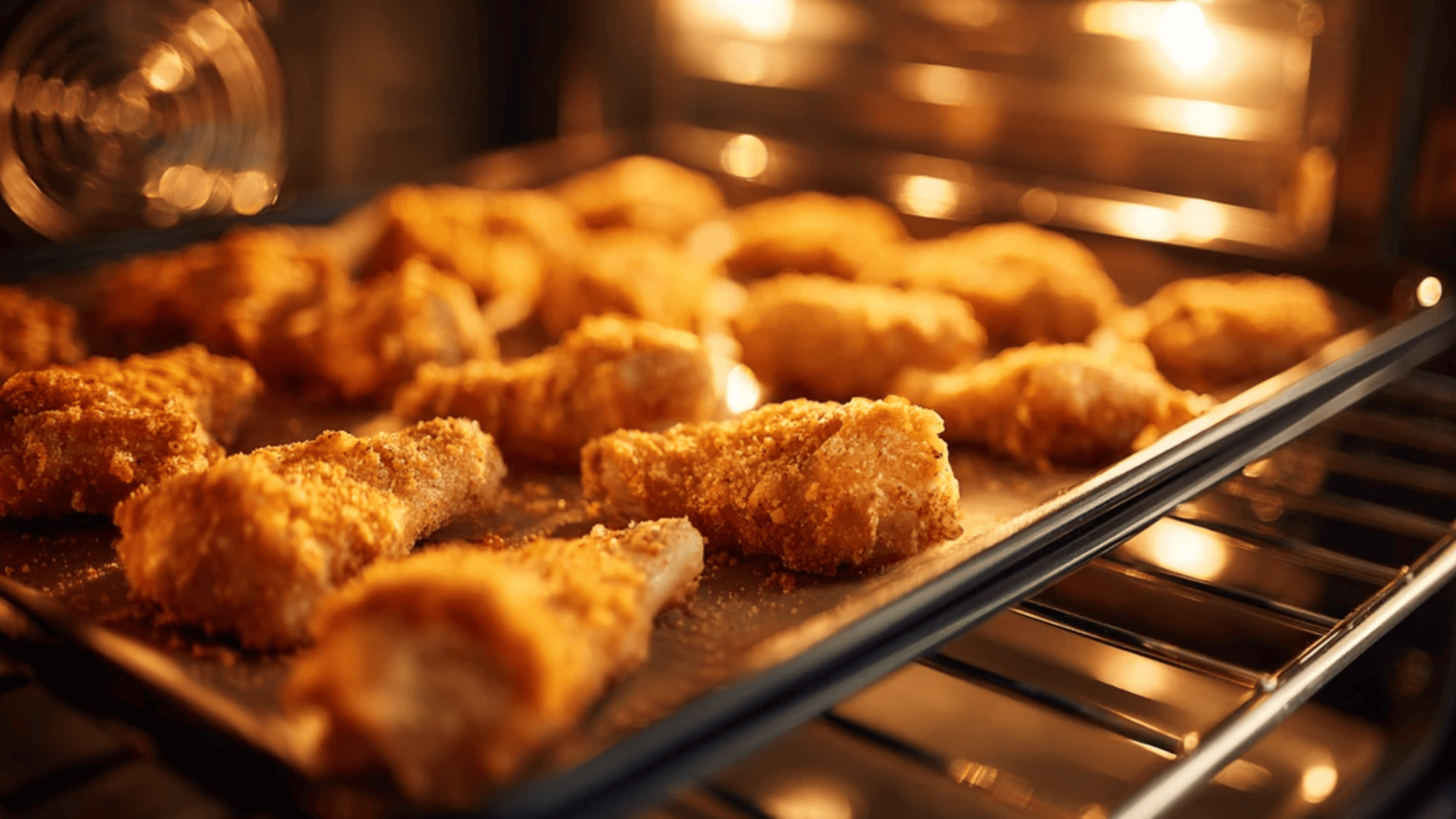
Cooking chicken straight from frozen is safe and effective, offering a convenient option when you skip the thawing process entirely.
|
Cooking from frozen is USDA-approved, but always verify the temperature for safety and avoid large frozen pieces.
Time: 1.5× normal cooking time | Best for: Last-minute meals, small cuts, or tenders
7. Defrosting Tray Method (Simple & Hands-Free)
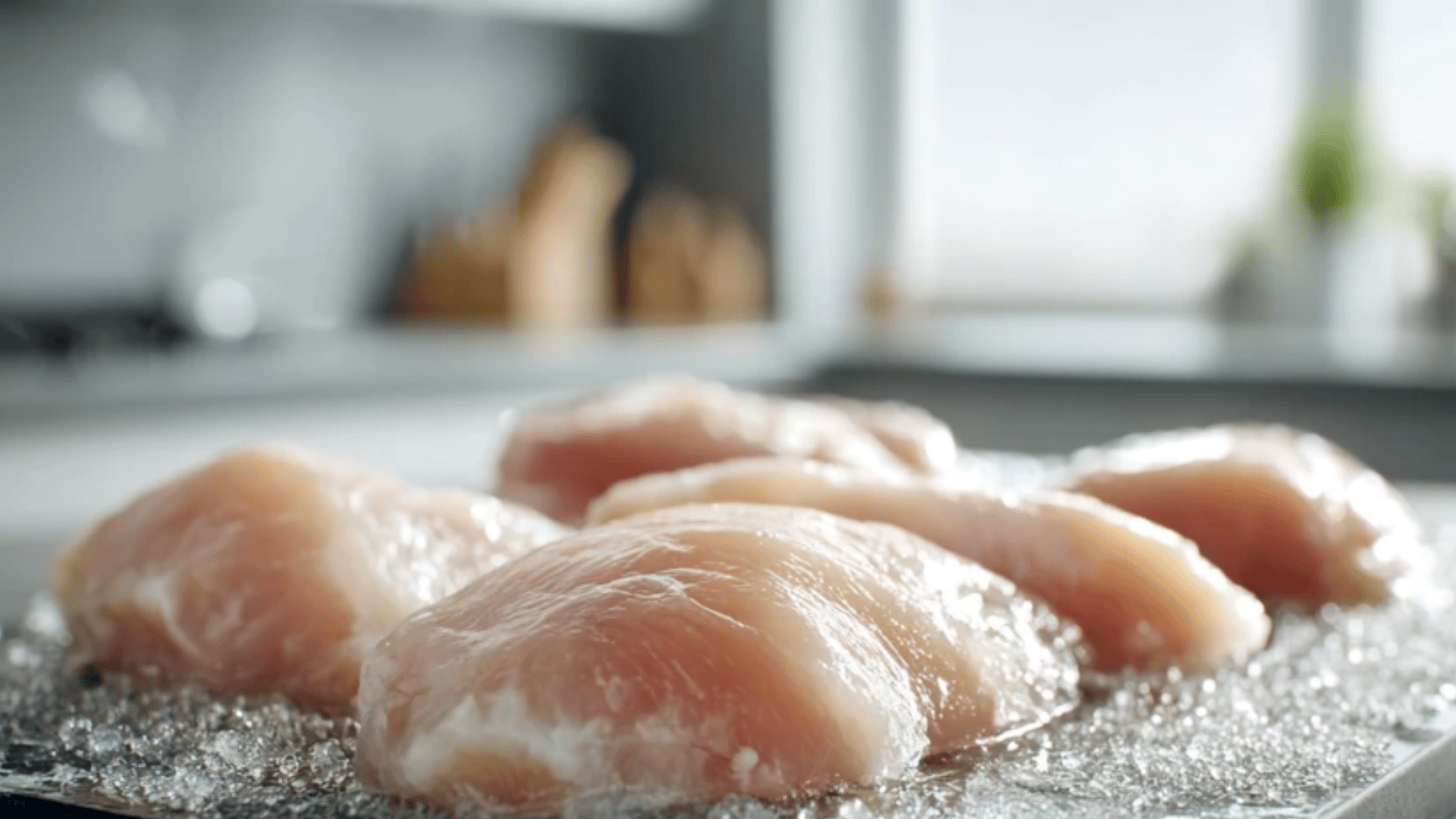
This modern method utilizes a specially designed defrosting tray that speeds up the thawing process naturally, eliminating the need for electricity or water.
|
The tray conducts ambient heat safely, reducing thawing time while keeping poultry out of the bacteria danger zone.
Time: 30–45 minutes | Best for: Small chicken pieces or thin cuts
Expert Tips for Quick Thawing
Speed is great, but safety and efficiency are paramount when learning how to thaw chicken quickly without compromising quality or flavor.
- Use proper bags: Zip-sealed freezer bags prevent contamination and ensure even thawing. Remove extra air before sealing.
- Check temperature: Always verify the chicken’s internal temperature reaches 165°F using a food thermometer.
- Portion before freezing: Divide into meal-sized portions; smaller cuts thaw faster and cook evenly.
- Flatten for speed: Flatten chicken breasts in the bag before freezing for quicker thawing later.
- Label clearly: Mark dates and contents to use older packages first for best quality.
- Match cooking style: For soups or stews, cook chicken straight from frozen to save time.
- Clean surfaces: Sanitize all areas, tools, and boards that come into contact with raw poultry to prevent contamination.
Quick preparation and smart storage make every thawing process faster, safer, and stress-free, while helping you cook flavorful, perfectly safe chicken every time.
Final Thoughts: Speed Meets Safety
Learning rapid thawing techniques opens up more flexibility in your meal planning.
If you opt for the speedy microwave approach, the reliable cold water technique, or choose to cook straight from frozen, food safety should always be your top priority.
The key is matching your approach to your available time. Have a few hours? The refrigerator method offers the best quality. Down to the wire?
Remember: poultry must reach an internal temperature of 165°F, regardless of the method used for thawing. Use a food thermometer to verify safety, and never rely solely on color or texture.
Now that you know how to thaw safely and quickly, you’re ready to tackle any last-minute dinner situation with confidence.
Frequently Asked Questions
Can I Thaw Chicken in the Oven?
No, the oven heats unevenly, causing partial cooking and bacterial growth before the inside thaws safely.
How Do I Thaw Chicken While Traveling or Camping?
Keep it sealed in a cooler with ice packs; never leave it exposed to warm air.
Does Marinating Help Thaw Chicken Faster?
Not really, marinating works best after the meat has thawed. Cold meat won’t absorb flavors efficiently or evenly.



